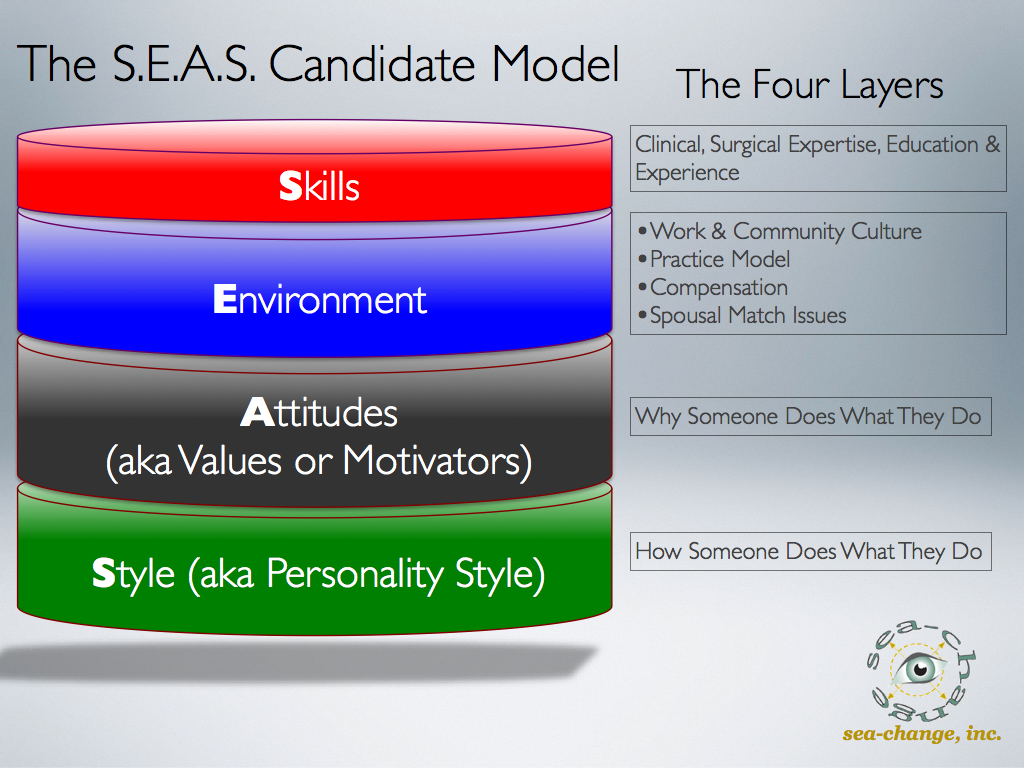A New Way Of Evaluating Ophthalmic Surgical Talent
I believe most SUB-IDEAL employees were affirmed as “Great Hires” at their start dates. The candidate didn’t morph into a misfit… the hiring manager’s perception did. What happened? They didn’t realize whom they were hiring because their recruiting process failed to reveal the TRUE candidate. All along, the candidate presented a facsimile, an illusion. Your hiring method should stop applicants from “over-adapting” (the tendency to put their “best foot forward”). You want them to put their “typical foot forward”.
Traditional hiring methods confound by creating a screen of subjectivity. “Oh, I liked him. I think she’ll be great. She had really good answers. What a really good C.V.!”
You need a method that elevates recruiting to objective analysis. Subjectivity is great for discussing motion pictures with friends. However, hiring decisions demand objectivity.
Here Is our Ophthalmic Medicine Candidate objective assessment model. Note these are relative criteria, neither good nor bad. We classify candidates as either match, or no-match.
Skills: the breadth and depth of your clinical and surgical skills.
Beware of the Skills Paradox. Ironically, this is the factor upon which most practices rely for hire/no hire decisions. Skills are easiest to assess, but have the least impact on long-term success. (My definition of success: you (and your family) and the practice principals/owners are happy and fulfilled long term.)
Environment:
Candidates that join conflicting environments feel discontentment, alienation, stress, and worry about factors over which they feel powerless. We assess your background, ideal work environment, culture, lifestyle and other criteria to determine environmental fit. Don’t forget a vital dynamic: happiness of your spouse. You’ve heard the axiom, “If the spouse isn’t happy, nobody is.”
Attitudes:
This layer symbolizes deep personal motivation. Why do you “do what you do”? What are your innermost desires, the magnets that draw you to certain activities? What factors repel you?
Consider the peril if your core values and attitudes misalign with those of your new boss. Battles will rage and sides entrench. Both invariably decry, “ I know you’re wrong, and I’m certain I am right.” Value-based conflicts lead the culprit list for “practice divorces”.
We consider Attitudes and Environment factors absolute criteria: e.g. Pass/Fail. They match yours or they don’t. When a practice meets those criteria, we proceed and then compare your Skills and Style.
Style (Personality Style):
People get hired for what they know, and fired for how they treat others. Commonly called personality, style is simply how people choose to do their jobs. Factors include communication style, personal interaction, organization, urgency, customer service orientation, versatility, and more. What job situation best meshes with your style?
If you inadvertently misjudge, buckle your seatbelt and prepare for a bumpy ride. Little irritations morph into major ones. Morale erodes. Emotions run unchecked. Unfortunately, style mismatches won’t reveal themselves until the end of the new employment honeymoon phase (weeks to months).

